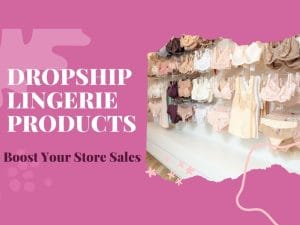Is creating new products from scratch something you’re sick of? Would you want to grow your business without having to deal with production headaches? Then, you have come to the correct spot.
White labeling is a unique commercial strategy that is revolutionizing product distribution. This detailed guide uncovers all you need to know about white-label products and makes the most of them. Let’s explore everything!
Table of Contents
ToggleWhat Does White Labeling Mean?
It is a business framework where manufacturers sell products without a brand name. The product is sold to a business that changes its name and markets it under its name. Basically, a white-label product is like a blank canvas. The reseller then paints their name on it. Afterward, they sell the products to make profits without needing to handle production.
“White labeling” is an old idea. Grocery stores have used it for decades. They provide their own branded versions of everyday household items.
The internet, however, has expanded white labeling’s reach and possibilities. Now, many businesses, small and large, can exploit the business strategy. In the rest of the article, we uncover hassle-free steps to take to get started.

What Is the White Label Business Model?
A white-label model’s success depends on a mutually beneficial partnership. The business framework works between two essential parties:
1) Manufacturer: The manufacturer creates and develops products. By making a lot of generic goods for different buyers, they can take advantage of economies of scale. This way, they improve the way they make things, which could lead to lower production costs.
2) Dealer/Reseller: The dealer uses the manufacturer’s products to make a profit. They don’t have to create products themselves, which takes a lot of time and money. They use their knowledge to focus on branding, marketing, and customer service.
What’s the Advantages of White Label?
The white labeling is an excellent recommendation for any company seeking to diversify its product line and gain an advantage over the competition. Here’s a more in-depth look at the main benefits:
1) Faster Product Distribution
In the past, research and development took a long time. Now, products come to market faster. Companies can avoid spending a lot of time on production by using white-label goods. They can take advantage of short-lived market trends and meet customer needs faster.
Imagine launching a new phone a few months after a new smartphone comes out instead of waiting years. White labeling makes the process easier, which gives companies a significant head start.
2) Lower Costs
White labeling leads to reduced costs. You don’t have to make significant investments upfront. White labeling lets businesses bypass product creation, manufacturing tools, and production facilities.
Businesses don’t have to build plants, hire engineers, or handle complicated supply lines. Hence, there are lower costs. You can then put your investment toward marketing, branding, and customer service.
3) Lower Risk
New ideas are essential, but they can be dangerous. Creating a brand-new offering is a considerable risk in terms of money. White labeling lowers risk by letting you test the market with an existing product.
It lets you observe customers’ reactions and how well the product fits the market. It’s like a test drive of product before you commit. The strategy allows businesses to test a product’s performance before spending on it.
4) More Products
White labeling lets businesses add more products to their line quickly. This way, they meet the needs of more customers faster. This approach supports diversification, which can bring in new types of customers. A wider range of products can also help people remember the name. Buyers can see your business as a one-stop shop for specific needs.
5) Focus on Core Competencies
White labeling allows companies to outsource development and production. Thus, they can focus on other aspects like marketing, branding, and customer service. This liberty improves their services.
More so, they can build stronger relationships with the people they want to reach. Imagine a clothing company that is great at selling and designing clothes but poor at making them. White labeling lets them focus on what they do best while giving their customers a bigger range of clothes.
Step-by-Step Look at the White Label Business Model in 2024!
Companies can seamlessly launch new products thanks to well-known manufacturers. Here is a deeper look at the process:
1) Developing a Better Idea and Testing It in the Market
The first step is to find a market gap. Companies do study to find out what customers want and need. So, they can Ensure the white-labeled product fits with their brand and the people they want to buy it. This step of confirmation is crucial if you don’t want to waste money on goods that people might not like.
2) Researching White Labeling
Research white-label makers for a clear idea of what to do. It means looking for trustworthy sellers that meet their needs. Some things to look out in white labeling are:
- The manufacturer’s production skills
- MOQ (minimum order quantity)
- The amount of customization
3) Finding And Negotiating
Strive to have a short list of possible partners. They get in touch with them to talk about product details, prices, and ways to make the product fit their needs. At this time, you might ask for examples to Ensure the quality meets your needs. Negotiate prices and minimum order amounts when white-labeling because large purchases are common.
4) Customization as a Way to Build Brand Identity
It is where the magic happens! The renamed product starts to take shape. Companies come up with unique designs for their boxes that show off their brand. They appeal to the people they want to buy from them. Logos, colors, and messages are thought out to make the brand experience flow together.
5) Strengths in Distribution and Marketing
After renaming, distribution is the next step. Companies use means like an online store, real stores, or relationships with companies. Additionally, focused marketing efforts to make people aware of the new product.
Companies can use the white-label model to produce more products and meet needs. They grow without significant investments for in-house production if they follow these steps.
Case Study: Using White Labeling to Build a Supplement Brand
Let’s say a business wants to get into the growing health and fitness market by making a new line of vitamins. It would be expensive and take a lot of time for them to make their own recipes and production centers.
But, they can get high-quality vitamins that a trustworthy white-label maker already makes. Then, they can change the design and packaging of vitamin products. It will help create a unique range of products that fit with their brand and target group. So they can put their efforts into selling and getting customers to stick with them.
A Comparison Between White labeling and Making Your Products
White labeling is an interesting idea. But it is essential to know how it’s different from other ways of making products:
1) White labeling
The reseller works with the manufacturer to make a one-of-a-kind product. After that, this item is only sold under the reseller’s name. With white labeling, different sellers may offer the same general product. With White labeling, you have more control over the product and can only sell it. However, it needs a bigger upfront investment and closer cooperation with the maker.
2) Making Your Products
When you develop and make your products, you have complete power over every part of them. They decide how the product is made and how they are packaged. You can completely differentiate and customize the brand. The downside is that this method needs a lot of time, money, and knowledge. The high barrier to entry makes it hard for many companies to manufacture their goods.
The best method for you will depend on your goals, resources, and willingness to take risks. Both techniques are excellent for businesses, but you should consider these factors.
What Are Different Kinds of Companies That Use White-Label Goods?
Private-label food and clothing lines are familiar examples of white labeling. However, they are used in a lot more places than just grocery stores and department shops.
White labeling works well in a wide range of businesses because it is versatile. Here are examples of how this approach is used across various fields:
1) Consumables
White-label goods are all over the shelves of grocery stores. The daily items are often made by well-known companies but sold under the retailer’s name. This way, shops have more items while still in control of prices and brand recognition.
2) Gadgets & Electronics
Another big player in white labeling is the tech world. Many well-known technology companies make parts or even whole products for other companies. It allows smaller businesses to get into the market without their factories. Also, well-known brands can use white labeling to add more products to their lines. And they won’t need to make all new gadgets.
3) Software
White labeling has become popular in the world of software as a Service (SaaS). Businesses can sell other companies “white-labeled” copies of their software. Then, the client puts their name on these “white-labeled” copies. With that, they are easily added to their current platform. By working with other companies, SaaS companies can get more customers.
A new company has made software for customer relationship management (CRM). At first, they might not have the money or brand recognition to fight with big names. They can work with famous companies in specific fields by white labeling their CRM system.
They can then change the name of the CRM software to their own and sell it to their customers. This way, the company grows its business by using the partner’s name and a large customer base.
A company creating customer relationship management (CRM) software can sell banks “white-labeled” copies of their software. This way, the banks can change the CRM to fit their specific needs.
4) Fashion and Clothing
White labeling is an integral part of the fashion business. It’s not just for store-brand clothing brands. Famous fashion brands might use white labeling to make lines for certain stores. This strategy can also help them meet the needs of people with different budgets.
New makers can also use white labeling to get their products made without the cost of equipment. They can test the market, make their ideas better, and build brand recognition this way.
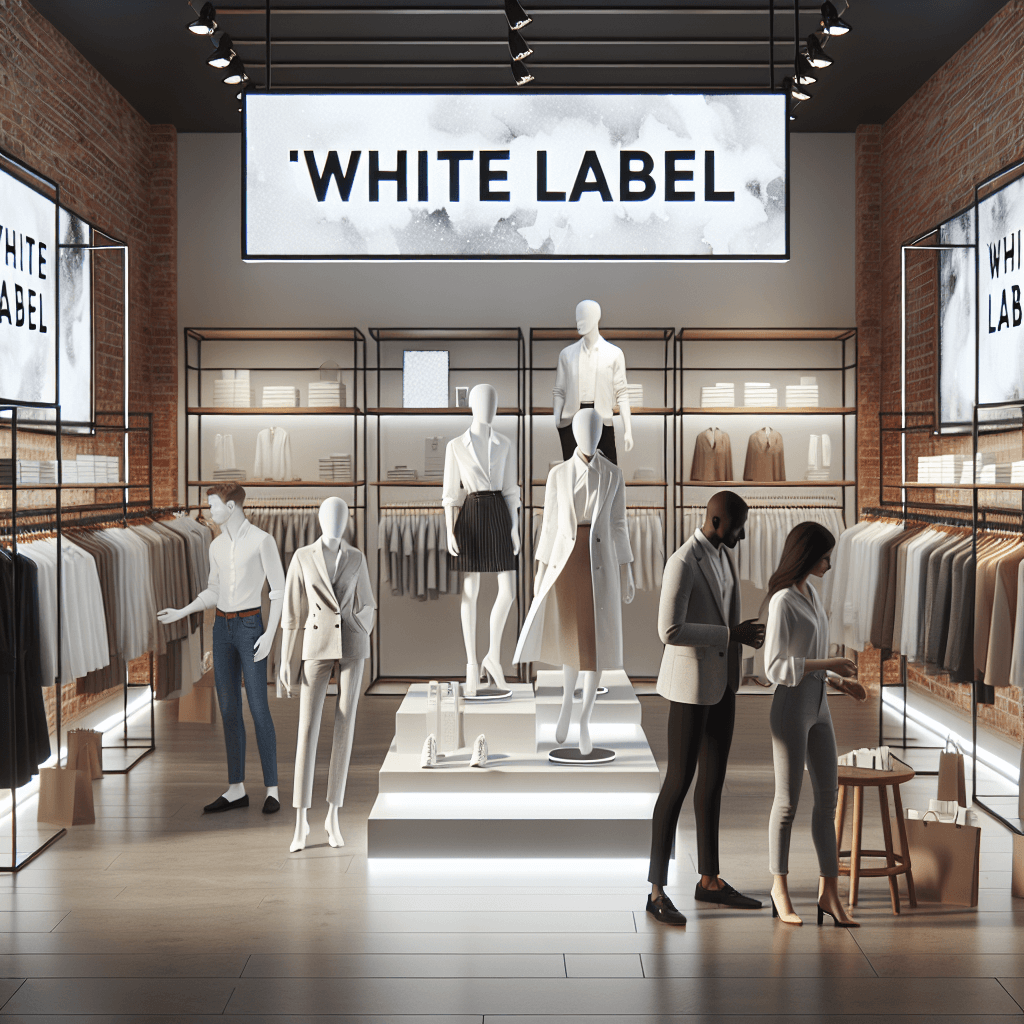
5) Health and Wellness
White labeling has also been found helpful in the health and wellness business. White-label makers can provide companies with quality supplements or even beauty items. Then, they can make necessary changes to packaging to fit the needs of their target group. It can also help their wellness products stand out in this crowded market.
6) Personal Care and Beauty
Another great example is the beauty business. Many private-label beauty companies package different skincare, hair care, and makeup. After that, stores and spas sell these items under fake names.
7) Home/Office Items
White labeling is common in everyday items like office furniture. Stores can stock their shelves with white-label products at reasonable prices. This way, they give customers a familiar brand experience while still making a profit.
8) Service
You can white-label even service! For example, a bank might offer credit cards under its name, but another bank would manage the handling and customer service. This way, businesses can provide more services without having to build their systems.
As you can see, different types of businesses use white labeling. Now, you can get a good idea of how helpful this method can be for all kinds of products.
Why Should You Pick White Labeling?
White labeling is a good approach for businesses of all kinds because it has many benefits, such as:
1) Low Cost
White labeling cuts down on upfront costs by getting rid of the need for production. Businesses can use the manufacturer’s knowledge and get lower unit costs than if they make the product themselves.
2) Less of A Barrier to Enter
Companies can enter new markets or expand their product lines with little cost. This perk is beneficial for new businesses and smaller companies. They often don’t have the means to do full-scale production.
3) Faster Time to Market
Companies can skip the long R&D process and get new goods on the market much faster. Thus, they stay ahead of the competition and take advantage of new market trends.
4) Brand Customization
Even if the core product is white labeled, companies can still make the brand shine. They can change the package, marketing materials, and even small parts of the product. This way, they keep their brand consistent and meet the needs of their target group.
5) Goods Management Flexibility
White marking gives you more options for managing your goods. Companies can buy goods in smaller amounts, which lowers the chance of having too much stock. They can also easily change the products they sell based on what the market wants.
How to Choose the Right White-label Items?
It’s important to pick suitable white-label goods for success. Here’s how to make wise choices:
1) Market study
To find profitable white-label chances, you should do a lot of study on the market. Look at market trends, competitor research, and customers to figure out trendy goods.
2) Demand and Competition
Find out how much demand there is for the white-label goods you want to buy. Look at how much competition there is to see if you can get this product to sell well in the market.
3) Profitability
Figure out the potential profit from selling the white-label goods. Consider the selling cost, retail price, and marketing costs to ensure business success.
How to Find the Right White-Label Products?
Finding the right white-label source is like finding a secret treasure. It sets the stage for lasting relationships, guarantees high-quality products, and leads to growth. Here is a detailed plan to help you with the buying process:
1) Sourcing from Domestic Suppliers vs. Other Countries
The first step is to decide whether to source products from within the country or from outside the country. Here are the most vital things to consider for each approach:
A) Domestic Providers
Pros: People who live in the same time zone and speak the same language can communicate more easily. Shorter shipping distances mean faster turnaround times. Visits to the job site could make quality control easy.
Cons: Compared to some foreign markets, it often costs more to make things there. You get a limited range of products based on the business.
B) Foreign Providers
Pros: You might be able to lower your production costs. Hence, your prices will be more competitive. You can choose from more brands and goods, especially for specialized things.
Cons: It can be hard to talk to each other because of different time zones and language hurdles. Because they ship from afar, lead times are longer. Having trouble doing quality control visits on-site. There is a chance of import taxes and safety issues. However, you can solve these issues by hiring a reliable sourcing agent.
2) Supplier Reputation Is Important
After making a plan for how you will source, it’s time to look into possible white-label sources. Here are some ways to find trustworthy partners:
A) Industry Reputation
Look for sellers who have a good track record and a good name in their field. Awards, certificates, and accreditations can help figure out a brand’s reputation.
B) Reviews and Testimonials From Customers
Don’t forget how powerful peer support can be. Look for reviews from other companies that have worked with the seller. Positive comments from happy customers say a lot about how committed the provider is to service and quality.
C) Compliance and Certifications
Ensure the provider follows the rules and standards. This bit is significant for goods that need to be certified for safety or health.
3) Ensuring the Quality of the Product
The quality of the goods should never be taken for granted. One lousy batch can hurt the image of your brand and make people less likely to trust you. To protect your high standards, do the following:
A) Ask for Samples
Before placing a big order, ask possible sellers for samples. You can then carefully judge the product’s quality, usefulness, and general craftsmanship.
B) Check for Quality
Don’t just look at how something looks. Ensure the product meets your needs and the standards of the business by doing thorough quality checks. For a full-quality study, you might want to work with a third-party testing lab.
C) Maintain Open Communication and Honesty
Talk to the seller freely during the whole process of buying. Make it clear what level of quality you expect, and don’t be afraid to ask questions or get more information.
4) Keep an Eye on the MOQ
White-label sellers may have minimum order quantities (MOQs) that you need to follow. The smallest amount of goods that a seller will make for a single order is shown by these minimums. Here’s how to successfully use MOQs:
A) Understand Your Needs
Guess correctly how many items you will sell at first and how many people will want to buy in the future. Pick a seller whose MOQs meet your wants. For new businesses or to try a new product, starting small with a smaller MOQ can be a good idea.
B) Negotiate Correctly
Some sellers may have set MOQs, but others may be more open to changes, especially for bigger or longer-term deals. Don’t be afraid to ask for smaller MOQs, especially if your business is new or if you’re buying something new.
C) Plan for the Future
Think about how you think your business will grow. If your company is going to grow quickly, pick a source that can increase production as your wants change.
5) Look at Different Customization Choices
How much flexibility the provider offers can have a big effect on how well you can make a unique brand experience. Take a look at these things:
A) Package Design
Package design is where your brand’s personality comes to life. Check to see what the provider can do for unique packaging design, such as adding logos, color schemes, and messages.
B) Variations on the Product
Some sellers may let you change the product itself. They are usually minimal changes. They span from making minor tweaks to the recipe and ingredients to functions to suit your target audience.
C) Long-Term Partnership
If your brand requires a lot of customization, it is beneficial to build a long-term relationship with a seller for product development and new ideas.
Remember, the best provider isn’t just a company that sells things. Instead, they’re a strategic partner who can help you make your brand goal come true.
The Best Ways to Find and Check-Out White-Label Suppliers
To find and evaluate white-label sources, here are some best practices to keep in mind:
1) Online Platforms
Look for white-label makers on online sites and in trade magazines. These methods can assist you by letting you narrow your search by product category.
Site like Alibaba,Aliexpress and others wholesale site
2) Ensure You Go to Trade Shows
These are great places to meet possible white-label sellers in person. You can look at their goods, talk about how they can be customized, and get a feel for how they run their business.
What Are the Common Terms and Rules Used in White-Labeling?
A clear deal and good communication are critical to a white-label relationship that works. Let’s look at some essential things to keep in mind when dealing with white-label suppliers:
Common Terms
Below are some common terms that suppliers mostly use during discussions. You must know about these terms before finalizing any deal.
1) Pricing
Talk about ways to set prices that are fair and good for both sides. The common tactic is offering deals for bigger orders or setting up a price structure with different levels for different products.
2) Minimum Order Quantities (MOQs)
Discuss MOQs and ensure they fit with your current needs and your plans for sales growth. If possible, be flexible, especially when starting. This way, you don’t end up with too much stuff.
3) Payment Terms
Confirm the payment terms are clear. Elaborate on how to pay, when payments are due, and any fees that might be charged for being late. Talk to people about good payment terms that will help your business’s cash flow.
4) Delivery and Lead Times
Be clear about when you expect things to be delivered and how much they will cost. Ensure that the production wait times work with your marketing and sales plans.
5) Intellectual Property Rights
The deal should make it clear who owns the intellectual property rights for the white-label goods. It includes the logo features you add or any changes you make to the main product.
Rules
Another important part of white labeling is figuring out the rules. Here is a list of some important things to think about:
1) Product Safety Rules
Ensure that the white-label goods follow all safety rules that apply to the people you want to buy them. These rules may be different for different types of products and other countries.
2) Labeling Requirements
Learn about the labeling rules that your target market has. The information includes what needs to be printed on the packaging, like a list of chemicals, a tip about safety, or information about how the product was made.
3) Quality Control Steps
Talk to your white-label provider about setting up clear quality control steps. To ensure that the quality of the products stays the same, this could mean inspecting them regularly or asking for proof of analysis.
You can set yourself up for a good white-label partnership by being aware of these negotiation points and legal issues.
White-Label vs. Private Label – Which One Is Best for Your Business?
Businesses that want to offer more products have great choices in white labeling and private labeling. Knowing the details of each method helps make an informed choice. Here are full details to help you find your way around the strategic map and pick the best route for your needs:
1) Customization and Making Changes
White Label: This type of customization lets you change a few things, mainly the logos and package. Through names, color schemes, and messages, companies can make the product look and feel more like their brand. This method makes it easier to respond quickly to changes in the market or in what customers want.
Private Label: Gives you more power over how the product is made and how it is customized. Companies are free to come up with their recipes, find their ingredients, and create personalized packaging that fits their brand and appeals to a specific group of customers. This level of customizing helps products stand out and makes it possible to create exclusive product lines.
2) Investment
White Label: When compared to private labeling, white labels usually need less money upfront. When businesses buy custom goods, they don’t have to spend money on R&D, manufacturing facilities, or minimum order quantities. This low-cost method lets the product get into the market faster and test its potential.
Private Label: Needs a bigger investment upfront. Companies need to set aside money and time to develop new products. Hence, there would be market research, recipe trials, and small-scale production runs. Manufacturers may also set minimum order amounts that can add to the starting cost. However, having a unique line of products can pay off in the long run, making the prices worthwhile.
3) Product Launch
White Label: It’s easier to get goods to market quickly because they are already made. Companies don’t have to go through the lengthy R&D and production steps that come with developing something themselves. Hence, they can take advantage of short-lived market trends and quickly meet customer wants.
Private Label: It takes longer to get to market because of the creation process. Companies expunge time on study, preparation, and maybe even getting approvals from regulators. But this time allows them to make a one-of-a-kind item that can pay off in the long run by helping people remember your brand and staying loyal.
4) Being Exclusive
White Label: You don’t have complete control over this option because other sellers may also sell the same white-label goods. The inclusiveness could cause more competition and price fights, which could cut into profits.
Private Label: A private label product is only sold by your name, so it gives you more privacy. It helps brands stand out, lowers competition for that one product, and gives you more power over your price strategy.
5) Power Over the Product
White Label: You have less power over how the main product is made or what ingredients are used. Businesses depend on the white-label manufacturer’s knowledge and high standards for quality. There may be some ways to customize the product, but the main product itself doesn’t change much.
Private Label: This gives you more control over the quality, materials, and general function of the product. Manufacturers and businesses can work together to make a product that fits their needs and appeals to their target market. This amount of control makes it possible to come up with new and different products.
How to Pick the Right Way?
Depending on your business goals and means, the best way to do things will vary. Here is a quick guide:
White labeling is the best way for you, if
- You need to get into the market fast with a product that doesn’t cost a lot.
- You want to see if a new product will work.
- Or, You don’t have a lot of money or time to develop or make products.
- You’re okay with having some editing choices.
Private labeling is the way to go if
- You want to set your business apart by providing a unique product.
- Or, you have a clear idea of a product or how it should work.
- You have the money to put into developing the product, which could mean higher costs upfront.
- You want to have complete control over the products’ quality and ingredients.
White labeling and private labeling both help a business grow in the long run. Considering your wants and resources, you can choose the strategy that will help you reach your goals. In the end, your business goals, finances, and company vision will determine the best option.
White-label brand example
Putting your name on a general product isn’t the only way to run a white-label business. It’s about using high-quality products that are already out there to build a strong brand and get customers to stick with you. Some companies that did well by using white-label goods are shown below:
1) Getting on the Resveratrol Wave with Vine Vera:
Vine Vera is a skincare brand that exploited the growing interest in resveratrol, an antioxidant. They used white labels since they lacked the money and time to make their recipes.
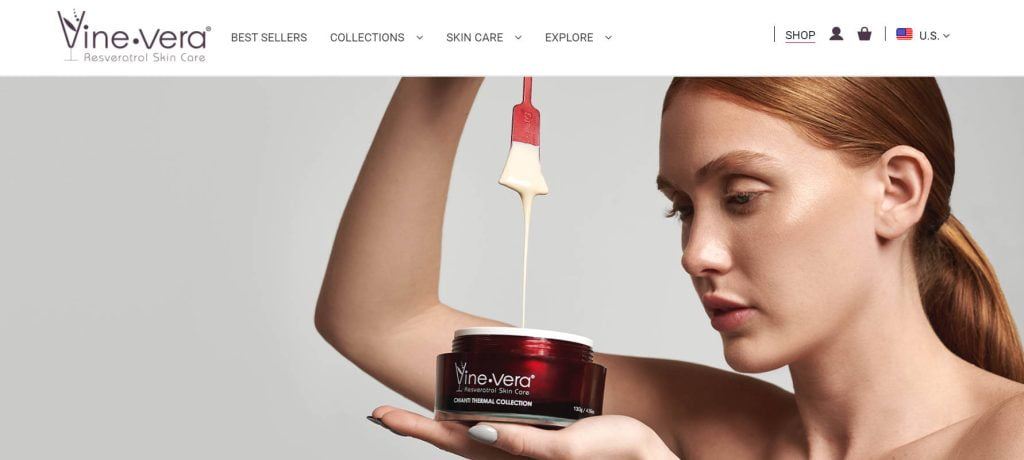
By carefully looking into white-label makers, Vine Vera was able to find a variety of high-quality skincare items that contained resveratrol. Then, they gave the brand a sleek and classy look with high-quality packages, focused advertising, and informational videos about resveratrol’s health benefits.
With white labeling, Vine Vera was able to become a star in the resveratrol skin care business. This brand is an exemplar of how white labeling can lead to new ideas.
2) Nubi Hair-Your Trusted Stop for All Your Hair and Beauty Needs
Nubi Hair branded its white-label well. In the market, this business saw a need for high-quality, stylish hair tools that were easy for regular people to get. They chose to sell “white label” hair tools instead of starting their own production business.
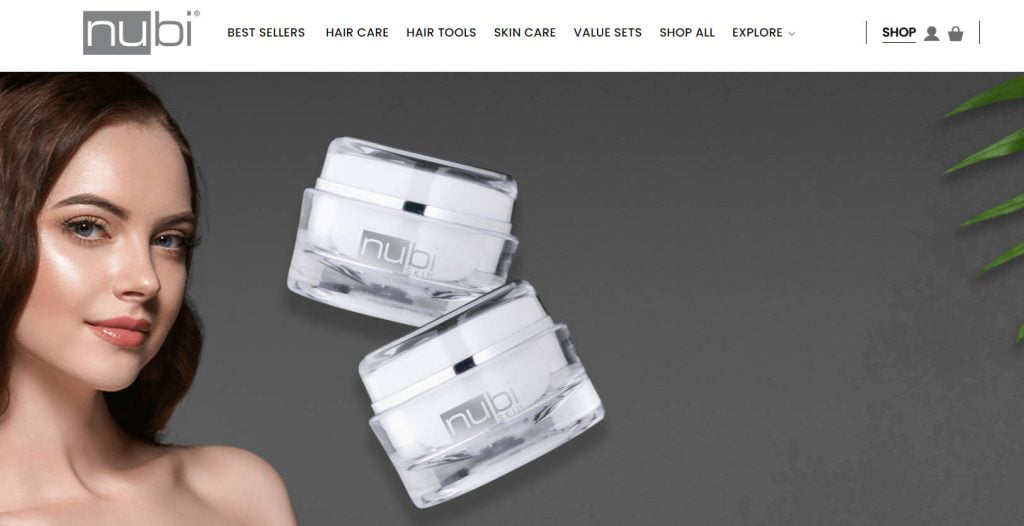
Nubi Hair carefully chose items that met their high standards for quality and could be used in a number of ways. Then, they made a consistent brand identity with sleek packaging and targeted marketing efforts that gave buyers the tools they needed to get salon-quality results at home. Nubi Hair made a name for itself in the hair care market by using white labeling. From their story, we see how important branding and marketing are to success.
3) Kylie Cosmetics
You read that right. In its early stages, Kylie Jenner’s billion-dollar cosmetics business used white labels a lot. The first Kylie Lip Kits were “white label” goods, which means they were high-quality liquid lipsticks made by a different business.
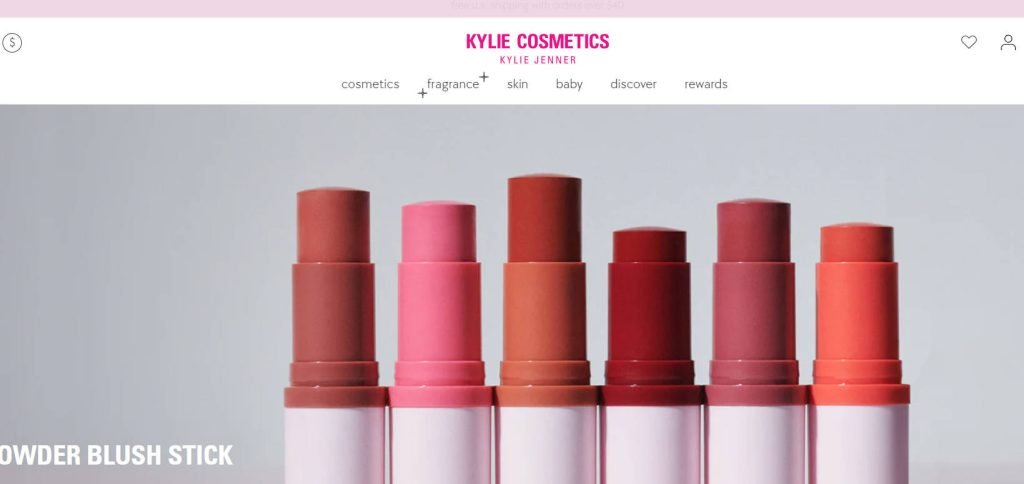
The brand became famous, though, thanks to Kylie Jenner’s huge social media following and marketing efforts. The culture that the product reflected was more important than the product itself. With smart marketing and a strong brand identity, Kylie Cosmetics shows how powerful it can be to use white-labelgoods.
4) The Rise of Comfort Clothing
Another interesting case study is the Ministry of Supply. This business saw a need for comfy, high-performance job clothes. They bought new fabrics that didn’t wrinkle and let air flow through them instead of making them.
Ministry of Supply specializes in design and sewing. They make clothes that would appeal to modern professionals who want to look good. The success shows how white labeling lets businesses focus on branding and grow.
5) The Rise of Dollar Shave Club
The Dollar Shave Club changed the market for expensive razors. They bought high-quality razors and blades without paying the extra that stores add. Customers liked their smart marketing efforts and subscription plans. This strategy shows that white labeling can be a powerful way to give customers value and ease.
These examples of white-label success show how flexible this business plan can be. White labeling lets businesses grow without handling their development and production. They can take advantage of new trends and build a strong brand identity.
Businesses that sell ready-made goods can become successful by focusing on smart marketing, customer experience, and having a strong brand voice. White labeling is just a tool; what makes it work is how you use it and your idea.
What Are the Challenges and Risks Associated with White Labeling?
White marking may seem like an easy way to get more products, but it can be hard to do. Before you jump in headfirst, think about these possible problems:
1) Lack of Control and Customization
Products that are easy to find are appealing. However, they come with a price: you have less control over them. You depend on the white-label manufacturer’s knowledge to help you make the products.
You also depend on them to check their quality and come up with new ideas for the future. There may not be a lot of customization choices, which can make it hard to stand out in a busy market. If the same white-label product shows up on store shelves under different names, this can be a big problem.
2) Quality and Dependability Concerns
In white labeling, another company controls your brand’s image. Poor-quality products hurt your brand’s reputation. Customers are less likely to trust you. It is vital to check out white-label producers and set clear quality control measures. Remember that one bad batch can have effects that last for a long time.
3) Limited Profit Margins
White-label products have competitive prices. It is especially true if the product is sold by more than one reseller. Hence, it can make it hard to make a profit, especially if you’re only fighting on price.
4) Supplies Management and Dependence
You need to predict demand and keep track of your supplies to be successful. For bigger orders, you may need to depend on the white-label manufacturer’s production ability and wait times. Stock-outs or delays can make customers angry, which can hurt sales. Keep the lines of communication open and set clear wait times with your white-label partner.
5) Exclusiveness and Intellectual Property
Most of the time, you won’t have the intellectual property rights to white-label goods. Hence, you can’t stop other businesses from selling the same item or similar products. For long-term success, you might want to create a unique brand name. Also, come up with solid marketing plans and maybe look into private labeling for your main goods later on.
How to Get Rid of the Risks Associated With White-Labeling?
Here is how to mitigate the risks of white labeling:
- Do your research: Research on possible white-label makers. Putting quality control measures and a track record at the top of your list.
- Pay attention to branding and marketing: A strong brand identity and focused marketing can cause your product to stand out.
- Build smart partnerships: Get to know your white-label manufacturer well. This way, you can talk to them quickly and keep track of your goods well.
Think about using a mix of white labeling and private labeling for your main goods. This step allows you to have more control and helps you stand out over time.
FAQ for White Label Product
Should Every Business Use White Labeling?
White labeling isn’t always the best way to do things. It works great for companies that want to get into new markets faster and save money upfront. However, private labeling might be better for businesses that want complete control over their products or want a lot of privacy.
What Are the Hardest Things About White Labeling?
You need to find trusted white-label suppliers and ensure their product quality is high. You should also need to note that you may not have full control over the core product. Plus, other dealers may be using the same product, which could be a threat.
How Can I Be Sure That the White-Label Goods I Buy Are Good?
It is vital to do a thorough study on suppliers. Ask for samples and set up transparent quality control processes. Reputable suppliers follow industry norms and give proof of analysis.
Can I Put My Name on Any Product?
White labeling opens up a lot of product options, but it also has some limits. Find out what rules and safety standards your target market has. There may be tighter rules for some goods, like supplements or toys for kids. Intellectual property rights and marking compliance are legal issues to consider.
Talking to a lawyer can help you get through these tricky situations. You can’t white-lab everything. However, strategic planning can help pick options that are legal and profitable.
What Are the Legal Issues That Come Up With White Labeling?
Read through contracts with white-label sellers very carefully. Things to consider are intellectual property rights, product responsibility, and labeling laws. Your white-label business needs to follow the law. Talk to an attorney who specializes in intellectual property and product marking. Their skills can help you.
How Can I Make My Secret Brand Goods Stand Out?
Spend money on creative ways to sell and brand your business. Unique packaging and focused marketing can help your product stand out from the rest. Ensure you really invest in these factors to stay ahead.
Final Thoughts
Businesses can increase their product line and grow with white labeling. This guide has all the information you need to find your way around the white-label world. It covers the basics of finding reputable sources and knowing how the law works.
If you have gotten this far, you’re ready to use the power of white labeling. But remember, the best way to get the most out of white labeling is to do a lot of research. You also have to plan carefully and form beneficial relationships. If you use this method, it can open up great business opportunities.



